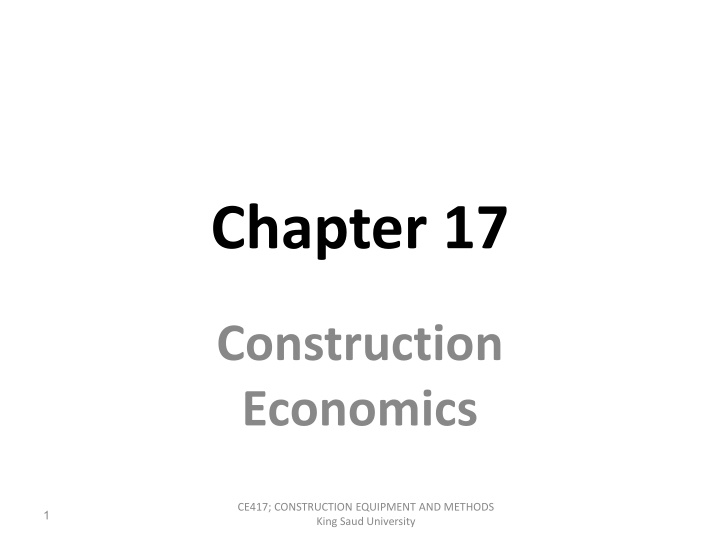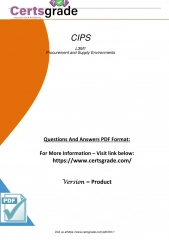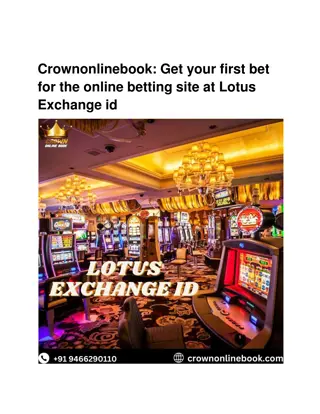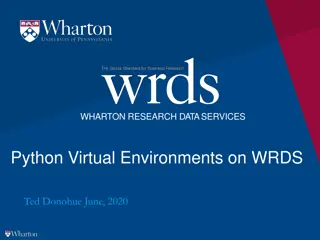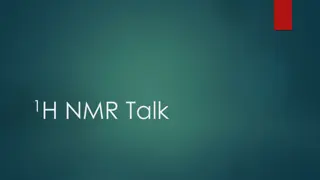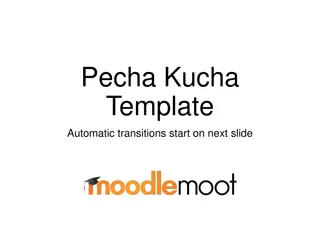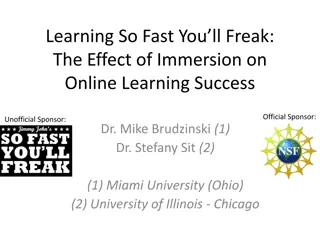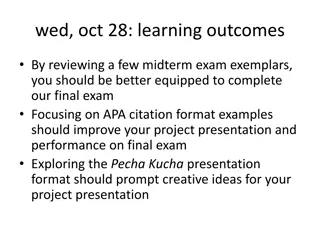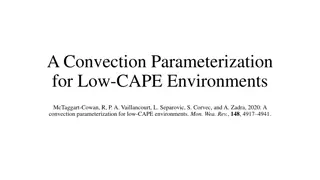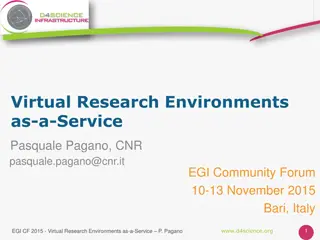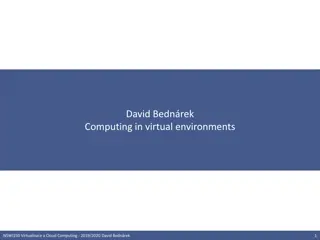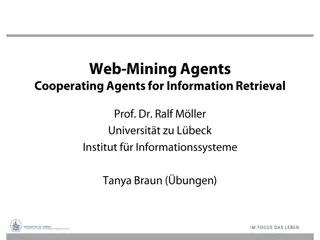Using Pecha Kucha in Online Environments
The innovative use of Pecha Kucha presentations in online settings, enhancing student engagement and learning outcomes. Discover its application in various educational contexts and its benefits over traditional presentation styles. Uncover how Pecha Kucha aligns with the QM Rubric and fosters collaborative learning. Unlock the potential of visual storytelling and concise delivery in educational settings through Pecha Kucha.
Download Presentation

Please find below an Image/Link to download the presentation.
The content on the website is provided AS IS for your information and personal use only. It may not be sold, licensed, or shared on other websites without obtaining consent from the author.If you encounter any issues during the download, it is possible that the publisher has removed the file from their server.
You are allowed to download the files provided on this website for personal or commercial use, subject to the condition that they are used lawfully. All files are the property of their respective owners.
The content on the website is provided AS IS for your information and personal use only. It may not be sold, licensed, or shared on other websites without obtaining consent from the author.
E N D
Presentation Transcript
Chapter 17 Construction Economics CE417; CONSTRUCTION EQUIPMENT AND METHODS King Saud University 1
17-1 INTRODUCTION The financial management of a construction company is equally as important to company success as is its technical management. The purpose of this chapter is to introduce the reader to: the terminology and basic principles involved in determining the owning and operating costs of construction plants and equipment, analyzing the feasibility of renting or leasing rather than purchasing equipment, and the financial management of construction projects. CE417; CONSTRUCTION EQUIPMENT AND METHODS King Saud University 2
17-2 TIME VALUE OF MONEY The amount of money held in a savings account will increase with time if interest payments are allowed to remain on deposit (compound) in the account. The value of a sum of money left on deposit after any period of time may be calculated using Equation 17-1. F = P (1+i)n where F =value at end of n periods (future value) P =present value i =interest rate per period n =number of periods The expression (1 + i)nis often called the single-payment compound interest factor. (17-1) CE417; CONSTRUCTION EQUIPMENT AND METHODS King Saud University 3
17-2 TIME VALUE OF MONEY Equation 17-1 can be solved to find the present value (present worth) of some future amount, resulting in Equation 17-2. p= F /(1 + i)n (17-2) The expression 1/(1 + i)n is called the single-payment present worth factor. The methods of engineering economy are widely used to: analyze the economic feasibility of proposed projects, to compare alternative investments, and to determine the rate of return on an investment CE417; CONSTRUCTION EQUIPMENT AND METHODS King Saud University 4
17-3 EQUIPMENT COST Elements of Equipment Cost Owning Costs Operating Costs CE417; CONSTRUCTION EQUIPMENT AND METHODS King Saud University 5
Elements of Equipment Cost We have discussed the proper application of the major items of construction equipment and some methods for estimating equipment's hourly production. We then divided the equipment's hourly cost by its hourly production to obtain the cost per unit of production. we have simply assumed that we knew the hourly cost of operation of the equipment. In this section we consider methods for determining the hourly cost of operation of an item of equipment. it is necessary to estimate many factors, such as fuel consumption, tire life, and so on. 6 CE417; CONSTRUCTION EQUIPMENT AND METHODS King Saud University
Elements of Equipment Cost The best basis for estimating such factors is the use of historical data, preferably those recorded by your construction company operating similar equipment under similar conditions. If such data are not available, consult the equipment manufacturer for recommendations. Equipment owning and operating costs (frequently referred to as 0 & 0 costs), as the name implies, are composed of owning costs and operating costs. Owning costs are fixed costs that are incurred each year whether the equipment is operated or not. Operating costs, however, are incurred only when the equipment is used. CE417; CONSTRUCTION EQUIPMENT AND METHODS King Saud University 7
Owning Costs Owning costs are made up of the following principal elements: Depreciation. Investment (or interest) cost. Insurance cost. Taxes. Storage cost. CE417; CONSTRUCTION EQUIPMENT AND METHODS King Saud University 8
Depreciation Depreciation represents the decline in market value of an item of equipment due to age, wear, deterioration, and obsolescence. Depreciation is used for two separate purposes: 1. evaluating tax (Zakat) liability, and 2. determining the depreciation component of the hourly equipment cost. CE417; CONSTRUCTION EQUIPMENT AND METHODS King Saud University 9
Depreciation In calculating depreciation, the initial cost of an item of equipment should be the full delivered price, including: transportation, taxes, and initial assembly and servicing. For rubber-tired equipment, the value of tires should be subtracted from the amount to be depreciated because tire cost will be computed separately as an element of operating cost. CE417; CONSTRUCTION EQUIPMENT AND METHODS King Saud University 10
Depreciation Equipment salvage value should be estimated as realistically as possible based on historical data. The most commonly used depreciation methods are: the straight-line method, the sum-of-the-years'-digits method, the double-declining balance method, and IRS-prescribed methods. CE417; CONSTRUCTION EQUIPMENT AND METHODS King Saud University 11
Straight-Line Method The straight-line method of depreciation produces a uniform depreciation for each year of equipment life. Annual depreciation is thus calculated as the amount to be depreciated divided by the equipment life in years (Equation 17-3). Dn= (Cost - Salvage (- tires)) / N where N =equipment expected life (years) n =year of life (1, 2, 3, etc.) (17-3) CE417; CONSTRUCTION EQUIPMENT AND METHODS King Saud University 12
EXAMPLE 17-1 Using the straight-line method of depreciation, find the annual depreciation and book value at the end of each year for a track loader having an initial cost of $50,000, a salvage value of $5000, and an expected life of 5 years. CE417; CONSTRUCTION EQUIPMENT AND METHODS King Saud University 13
EXAMPLE 17-1 Solution Dl, 2, 3, 4, 5= (50,000- 5000)/5 = $9000 Year Depreciation Book Value (End of Period) $50,000 41,000 32,000 23,000 14,000 5,000 0 1 2 3 4 5 0 $9,000 9,000 9,000 9,000 9,000 CE417; CONSTRUCTION EQUIPMENT AND METHODS King Saud University 14
Sum-of-the-Years'-Digits Method The sum-of-the-years'-digits method of depreciation produces a nonuniform depreciation which is the highest in the first year of life and gradually decreases thereafter. The amount to be depreciated is the same as that used in the straight-line method. (Equation 17-4) Dn= [(N - (n-1))/(Sum of years ' digit)] Amount to be depreciated (17-4) CE417; CONSTRUCTION EQUIPMENT AND METHODS King Saud University 15
EXAMPLE 17-2 For the loader of Example 17-1, find the annual depreciation and book value at the end of each year using the sum-of-the-years'-digits method. Solution Using Equation 17-4: D1= (5- (1-1))/15 (50,000 - 5000) = 15,000 D2= (5- (2-1))/15 (50,000 - 5000) = 12,000 D3= 3/15 (50,000 - 5000) = 9,000 D4= 2/15 (50,000 - 5000) = 6,000 D5= 1/15 (50,000 - 5000) = 3,000 CE417; CONSTRUCTION EQUIPMENT AND METHODS King Saud University 16
EXAMPLE 17-2 Depreciation Year Book Value (End of Period) 0 1 2 3 4 5 0 $50,000 35,000 23,000 14,000 8,000 5,000 $15,000 12,000 9,000 6,000 3,000 CE417; CONSTRUCTION EQUIPMENT AND METHODS King Saud University 17
Double-Declining-Balance Method The double-declining-balance method of depreciation, like the sum-of-the-years' -digits method, produces its maximum depreciation in the first year of life, The annual depreciation factor is found by dividing 2 (or 200%) by the equipment life in years. Thus for a 5-year life, the annual depreciation factor is 0.40 (or 40%). Unlike the other two depreciation methods, the double-declining-balance method does not automatically reduce the equipment's book value to its salvage value at the end of the depreciation period. CE417; CONSTRUCTION EQUIPMENT AND METHODS King Saud University 18
Double-Declining-Balance Method Since the book value of equipment is not permitted to go below the equipment's salvage value, care must be taken when performing the depreciation calculations to stop depreciation when the salvage value is reached. (Equation 17-5) Dn=2/N Book value at beginning of year (17-5) CE417; CONSTRUCTION EQUIPMENT AND METHODS King Saud University 19
EXAMPLE 17-3 For the loader of Example 17-1, find the annual depreciation and book value at the end of each year using the double- declining-balance method. Solution Annual depreciation factor = 2.00/5 = 0.40 D1=0.40 50,000= 20,000 D2= 0.40 30,000 = 12,000 D3= 0.40 18,000 = 7,200 D4= 0.40 10,800 = 4,320 D5= 0.40 6,480 = 2,592 use $1,480* *Because a depreciation of $2592 in the fifth year would reduce the book value to less than $5000, only $1480 ($6480 - $5000) may be taken as depreciation. CE417; CONSTRUCTION EQUIPMENT AND METHODS King Saud University 20
Investment Cost Investment cost (or interest) represents the annual cost (converted to an hourly cost) of the capital invested in a machine. Investment cost is computed as the product of an interest rate multiplied by the value of the equipment, then converted to cost per hour. The average hourly investment cost may be more easily calculated by Equation 17-6. Average investment = (Initial cost + Salvage)/2 (17-6) CE417; CONSTRUCTION EQUIPMENT AND METHODS King Saud University 21
Insurance, Tax, and Storage Insurance cost represents the cost of insurance for fire, theft, accident, and liability for the equipment. Tax cost represents the cost of property tax and licenses for the equipment. Storage cost represents the cost of rent and maintenance for equipment storage yards and facilities. CE417; CONSTRUCTION EQUIPMENT AND METHODS King Saud University 22
Operating Costs Fuel Cost. Service Cost. Repair Cost. Tire Cost. Special Items Operator CE417; CONSTRUCTION EQUIPMENT AND METHODS King Saud University 23
Operating Costs Operating costs are incurred only when equipment is operated. Therefore, costs vary with the amount of equipment use and job operating conditions. The major elements of operating cost include: Fuel cost. Service cost. Repair cost. Tire cost. Cost of special items. Operators' wages. CE417; CONSTRUCTION EQUIPMENT AND METHODS King Saud University 24
Fuel Cost The hourly cost of fuel is simply fuel consumption per hour multiplied by the cost per unit of fuel (gallon or liter). Table 17-l. TABLE 17-1: Fuel consumption factors (gal/h/hp) Load Conditions* Average 0.030 0.052 0.024 0.040 Type of Equipment Clamshell and dragline Compactor, self-propelled Crane Excavator, hoe, or shovel Loader Track Wheel Motor grader Scraper Tractor Crawler Wheel Truck, off-highway Wagon Low 0.024 0.038 0.018 0.035 Severe 0.036 0.060 0.030 0.048 0.030 0.024 0.025 0.026 0.042 0.036 0.035 0.035 0.051 0.047 0.047 0.044 0.028 0.028 0.014 0.029 0.037 0.038 0.020 0.037 0.046 0.052 0.029 0.046 *Low, light work or considerable idling; average, normal load and operating conditions; severe, heavy work, little idling CE417; CONSTRUCTION EQUIPMENT AND METHODS King Saud University 25
Service Cost Service cost represents the cost of oil, hydraulic fluids, grease, and filters as well as the labor required to perform routine maintenance service. Table.17-2 TABLE 17-2: Service cost factors (% of hourly fuel cost) Operating Conditions Service Cost Factor Favorable 20 Average 33 Severe 50 CE417; CONSTRUCTION EQUIPMENT AND METHODS King Saud University 26
Repair Cost Repair cost represents the cost of all equipment repair and maintenance except for tire repair and replacement, routine service, and the replacement of high-wear items, such as ripper teeth. It should be noted that repair cost usually constitutes the largest item of operating expense for construction equipment. Lifetime repair cost is usually estimated as a percentage of the equipment's initial cost less tires (Table 17-3). CE417; CONSTRUCTION EQUIPMENT AND METHODS King Saud University 27
Repair Cost it is suggested that Equation 17-7 be used to obtain a more accurate estimate of repair cost during a particular year of equipment life. Hourly Repair Cost = [Year digit / Sum of years' digits] x [Lifetime repair cost/ Hours operated] (17-7) CE417; CONSTRUCTION EQUIPMENT AND METHODS King Saud University 28
TABLE 17-3: Typical lifetime repair cost (% of initial cost less tires) Operating Conditions Type of Equipment Clamshell and dragline Compactor, self-propelled Crane Excavator, hoe, or shovel Loader Track Wheel Motor grader Scraper Tractor Crawler Wheel Truck, off-highway Wagon Favorable 40 60 40 50 Average 60 70 50 70 Severe 80 90 60 90 85 50 45 85 90 60 50 90 105 75 55 105 85 50 70 45 90 60 80 50 95 75 90 55 CE417; CONSTRUCTION EQUIPMENT AND METHODS King Saud University 29
EXAMPLE 17-5 Estimate the hourly repair cost for the first year of operation of a crawler tractor costing $136,000 and having a 5-year life. Assume average operating conditions and 2000 hours of operation during the year. Solution Lifetime repair cost factor = 0.90 Lifetime repair cost =0.90 $136,000 = $122,400 Hour Repair Cost = [1/ 15] [122,400/2000] = $4.08 (Table 17-3) CE417; CONSTRUCTION EQUIPMENT AND METHODS King Saud University 30
Tire Cost Tire cost represents the cost of tire repair and replacement. Table 17-4 may be used as a guide to approximate tire life. Tire repair will add about 15% to tire replacement cost. Equation 17-8 may be used to estimate tire repair and replacement cost. Tire Cost = 1.15 Cost of a set of tires /Expected tire life (h) (17-8) CE417; CONSTRUCTION EQUIPMENT AND METHODS King Saud University 31
TABLE 17-4: Typical tire life (hours) Operating Conditions Type of Equipment Favorable Average Severe Dozers and loaders 3,200 2,100 1,300 Motor graders 5,000 3,200 1,900 Scrapers Conventional 4,600 3,300 2,500 Twin engine 4,000 3,000 2,300 Push-pull and elevating 3,600 2,700 2,100 Trucks and wagons 3,500 2,100 1,100 CE417; CONSTRUCTION EQUIPMENT AND METHODS King Saud University 32
Special Items The cost of replacing high-wear items such as dozer, grader, and scraper blade cutting edges and end bits, as well as ripper tips, shanks, and shank protectors, should be calculated as a separate item of operating expense. As usual, unit cost is divided by expected life to yield cost per hour. CE417; CONSTRUCTION EQUIPMENT AND METHODS King Saud University 33
Operator The final item making up equipment operating cost is the operator's wage. Care must be taken to include all costs, such as: worker's compensation insurance, Social Security taxes, overtime or premium pay, and fringe benefits in the hourly wage figure. CE417; CONSTRUCTION EQUIPMENT AND METHODS King Saud University 34
Total Owning and Operating Costs After owning cost and operating cost have been calculated, these are totaled to yield total owning and operating cost per hour of operation. It does not include overhead or profit. CE417; CONSTRUCTION EQUIPMENT AND METHODS King Saud University 35
EXAMPLE 17-6 Calculate the expected hourly owning and operating cost for the second year of operation of the twin-engine scraper described below. oCost delivered = $152,000 oTire cost = $12,000 oEstimated life = 5 years oSalvage value = $16,000 oDepreciation method = sum-of- the-years'-digits oInvestment (interest) rate = 10% oTax, insurance, and storage rate = 8% oOperating conditions = average oRated power =465 hp oFuel price=$1.3/gal oOperator's wages = $8.00/h CE417; CONSTRUCTION EQUIPMENT AND METHODS King Saud University 36
EXAMPLE 17-6 Solution Owning Cost Depreciation cost: D2= (5-(2-1)) /15 (152,000 - 16,000 - 12,000) = $33,067 Depreciation = 33,067/2000 =$16.53/h Investment, tax, insurance, and storage cost: Cost rate = Investment + tax, insurance, and storage = 10 + 8 = 18% Average Investment = (152000 + 16000)/2 = $84,000 Investment, tax, Insurance, and storage = (84000 0.18)/2000 (17-6) = $7.56/h Total owning cost = 16.53 + 7.56 =$24.09/h CE417; CONSTRUCTION EQUIPMENT AND METHODS King Saud University 37
Operating Cost Fuel cost: Estimated consumption = 0.035 x 465 = 16.3 gal/h (Table 17-1) Fuel cost = 16.3 1.3 = $21.19/h Fuel cost (Diesel) = SR 0.25/ Rated horsepower = 350 kW Fuel consumption factors = 0.052 /h/kW Fuel cost= 0.25 x 0.052 x 350 = SR 4.55 / h Service cost: Service cost = 0.33 21.19 = $7.06/h (Table 17-2) Repair cost: Lifetime repair cost = 0.90 (152,000 - 12,000) = = $126,000 Repair cost = 2/15 (126000/2,000) = $8.40/h (17-7) (Table 17-3) CE417; CONSTRUCTION EQUIPMENT AND METHODS King Saud University 38
Tire cost: Estimated tire life =3000 h (Table 17-4) Tire cost = 1.15 $12,000/3000 = $4.60/h Special item cost: None Operator wages =$32.00/h Total operating cost = 21.19 + 7.06 + 8.40 + 4.60 + 32.00 = $73.25/h Total 0 & 0 Cost Owning and operating cost = 24.09 + 73.25 = $97.34/h CE417; CONSTRUCTION EQUIPMENT AND METHODS King Saud University 39
17-4 THE RENT-LEASE-BUY DECISION The question of whether it is better to purchase a piece of construction equipment rather than renting or leasing the item is difficult to answer. Leasing involves a commitment for a fixed period and may include a purchase option in which a portion of the lease payments is credited toward the purchase price if the option is exercised. Renting is a short-term arrangement subject only to the availability of rental equipment and a minimum rental period (usually 1 day). CE417; CONSTRUCTION EQUIPMENT AND METHODS King Saud University 40
17-4 THE RENT-LEASE-BUY DECISION In recent years there has been a trend toward increased leasing and renting of construction equipment. Some of the reasons for this trend include: inflation, the high cost of borrowed funds, and the wide fluctuation in the rate of demand for construction services. There are some construction companies that make it a policy to rent or lease all major items of equipment. Advantages of equipment ownership include governmental tax incentives (investment credit and depreciation), full control of equipment resources, and availability of equipment when needed. CE417; CONSTRUCTION EQUIPMENT AND METHODS King Saud University 41
17-4 THE RENT-LEASE-BUY DECISION Leasing and renting require little initial capital (usually none for renting) and equipment costs are fully tax deductible as project expenses. In general, purchasing equipment will result in the lowest hourly equipment cost if the equipment is properly maintained and fully utilized. equipment owning costs continue whether equipment is being utilized or sitting idle. Therefore, renting is usually least expensive for equipment which has low utilization. CE417; CONSTRUCTION EQUIPMENT AND METHODS King Saud University 42
Leasing is intermediate between the two and may be the best solution when capital is limited and equipment utilization is high. The lease-with-purchase option may provide an attractive opportunity to purchase the equipment at low cost after lease costs have been paid under a cost-type contract. One approach to comparing the cost of buying, leasing, and renting an item of equipment is illustrated in Example 17-7. Under the particular circumstances of Example 17-7, buying is significantly less expensive than either leasing or renting if the equipment is fully utilized for the planned 5 years or 10,000 hours. CE417; CONSTRUCTION EQUIPMENT AND METHODS King Saud University 43
FIGURE 17-1: Hourly cost of buying, leasing, and renting for Example 17-7. CE417; CONSTRUCTION EQUIPMENT AND METHODS King Saud University 44
17-5 FINANCIAL MANAGEMENT OF CONSTRUCTION Construction company failure in the United States indicate that the four major factors of: inadequate financing, underestimating costs, inadequate cost accounting, and poor management These factors account for over 80% of all failures. The financial management of a construction company is equally as important to company success as is its technical management is apparent. CE417; CONSTRUCTION EQUIPMENT AND METHODS King Saud University 45
Financial Planning Financial planning for a construction project includes: cost estimating prior to bidding or negotiating a contract, forecasting project income and expenditure (or cash flow), and determining the amount of work that a construction firm can safely undertake at one time. CE417; CONSTRUCTION EQUIPMENT AND METHODS King Saud University 46
Cost estimating for a project, as the name implies, involves estimating the total cost to carry out a construction project in accordance with the plans and specifications. Costs that must be considered include: labor, equipment, materials, subcontracts and services, indirect (or job management) costs, and general overhead (off-site management and administration costs). CE417; CONSTRUCTION EQUIPMENT AND METHODS King Saud University 47
Financial Planning A finance schedule or cash flow schedule shows the planned rate of project expenditure and project income. It is common practice in the construction industry for the owner to withhold payment for a percentage of the value of completed work (referred to as "retainage") as a guarantee until acceptance of the entire project. Even when periodic progress payments are made for the value of completed work, such payments (less retainage) are not received until sometime after the end of each accounting period. CE417; CONSTRUCTION EQUIPMENT AND METHODS King Saud University 48
project income will almost always lag behind project expenditure. The difference must be provided in cash from company assets or borrowed funds. The construction industry relies heavily on the use of borrowed funds for this purpose. the finance charges associated with the use of such funds, as well as the maximum amount of funds available, are important considerations in the financial planning for a construction project. CE417; CONSTRUCTION EQUIPMENT AND METHODS King Saud University 49
The use of CPM procedures also makes it easy to determine the effect on cash flow of different project schedules. Figure 17-2 shows a graph of project cost versus time for three different schedules: an early start schedule, a late start schedule, and a proposed schedule which is between these limits. CE417; CONSTRUCTION EQUIPMENT AND METHODS King Saud University 50
